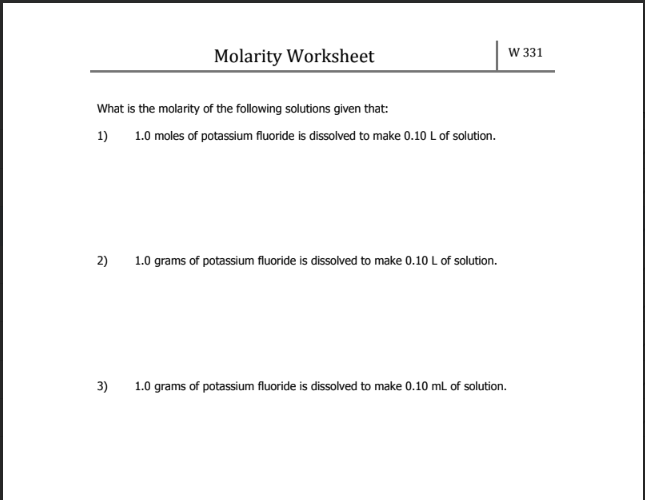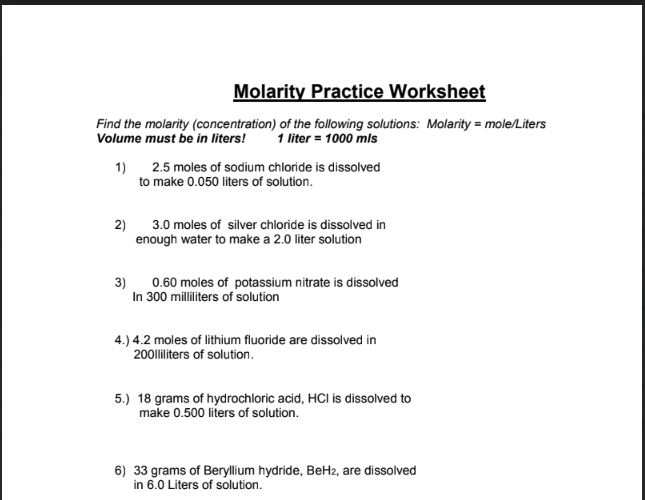Molarity
Related Examples and Practice Problems
Topic Summary & Highlights
and Help Videos
Core Concept
Molarity (M) is a unit of concentration used to describe how much solute is dissolved in a given volume of solution. It is defined as the number of moles of solute per liter of solution.
Molarity is calculated using the formula:
$M = \frac{\text{moles of solute}}{\text{liters of solution}}$
Practice Tips
Confusing molarity (M) with molality (m), which is moles of solute per kilogram of solvent.
Using the mass of the solution instead of the volume in liters.
Forgetting that diluting a solution decreases molarity but does not change the number of moles of solute.
Molarity is temperature dependent! Since molarity depends on the volume of the solution, it is temperature-dependent (volume changes with temperature).
Molarity Formula
Molarity is calculated using the formula:
$M = \frac{\text{moles of solute}}{\text{liters of solution}}$
Where:
M = Molarity of the solution (in moles per liter, or mol/L)
Moles of solute = The amount of solute in moles
Liters of solution = The total volume of the solution in liters
Brain Hack Tip
🧠 Here is a tip of how to remember how to remember molarity 🧠
Key Concepts
Solute and Solvent:
Solute: The substance that is dissolved (e.g., salt in a saltwater solution).
Solvent: The substance in which the solute is dissolved (e.g., water in a saltwater solution).
Solution: The homogeneous mixture of solute and solvent.
Units of Molarity:
Molarity is measured in moles per liter (mol/L), often abbreviated as M.
For example, a 1.0 M solution of NaCl contains 1 mole of NaCl dissolved in 1 liter of solution.
Dilution:
Diluting a solution reduces its molarity by adding more solvent.
Dilution formula: $M_1 V_1 = M_2 V_2$
Where:
$M_1$ and $V_1$: Initial molarity and volume
$M_2$ and $V_2$: Final molarity and volume
Preparing Solutions:
To prepare a solution of a given molarity, calculate the moles of solute needed, then dissolve it in enough solvent to reach the desired final volume.
Temperature Dependence:
Since molarity depends on the volume of the solution, it is temperature-dependent (volume changes with temperature).
Steps for Calculating Molarity
Calculate Moles of Solute:
If the amount of solute is given in grams, convert it to moles using the molar mass of the solute. $\text{moles} = \frac{\text{mass (g)}}{\text{molar mass (g/mol)}}$
Determine Volume of Solution in Liters:
Convert the solution volume to liters if necessary (1 L = 1000 mL).
Apply the Molarity Formula:
Substitute the moles of solute and the liters of solution into the formula: $M = \frac{\text{moles of solute}}{\text{liters of solution}}$





